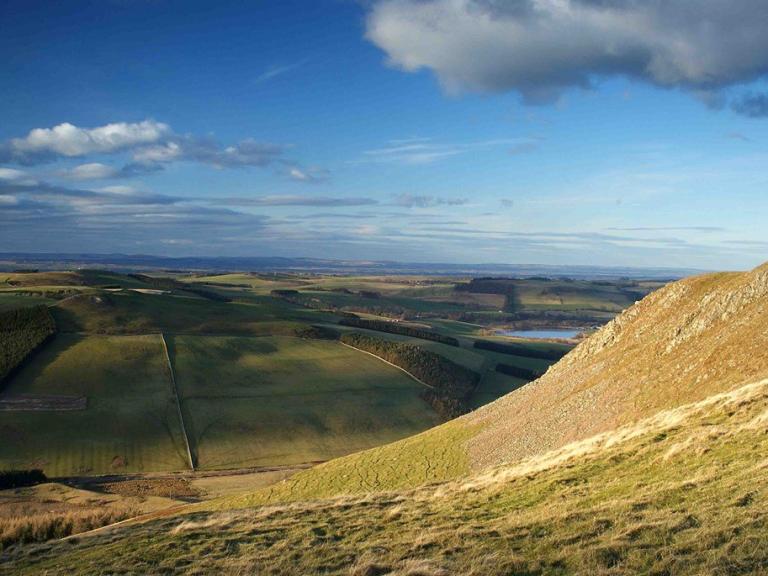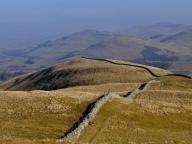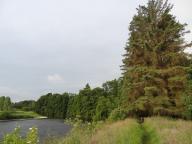


individuele reizen
Schotland - 9 dagen
St. Cuthbert's Way
zwaarte 
St Cuthbert's Way is een 100 kilometer langeafstands wandelroute tussen Melrose, in de Scottish Borders, en Lindisfarne, aan de Engelse kust, in Northumberland. De wandeling is vernoemd naar de 7e-eeuwse monnik Cuthbert, die later bisschop werd in Lindisfarne waar hij tot zijn dood verbleef.
Tijdens deze route, die Engeland met Schotland verbind, maakt u kennis met een deel van Groot-Brittannië dat nog grotendeels onaangetast is door massatoerisme. Rustige marktsteden, oude ruines van abdijen, heiedevelden en akkers kenmerken het landschap.
De wandeling naar Holy Island kan alleen bij laag water gemaakt worden.
Dayprogramm
Day 1 Arrive Melrose
Less than 90 minutes by public transport from Edinburgh. Take time to visit the 12th century abbey
Day 2 : Melrose to St Boswells
The walk starts at Melrose, probably the loveliest of the Scottish Borders towns. Arrive early if possible, and explore the 12th century Abbey ruins or visit the Teddy Bear museum. The first day of walking takes you between the distinctive twin peaks of the Eildon Hills (a short diversion takes you up one or both, to take in fantastic views of the whole Borders area). After descending you go through the picture postcard village of Bowden and close to another ruined Abbey at Dryburgh (cross the Tweed on the suspension bridge - for walkers only), then along the banks of the River Tweed to the quiet village of St Boswells.
Day 3 : St Boswells to Jedburgh
The next day, you continue alongside the Tweed for a while, then follow a Roman road (they were here even before St Cuthbert) to Harestanes, where there are excellent displays about local wildlife and history. Another excellent viewpoint is nearby at Peniel Heugh. A short walk by the River Teviot and back onto the Roman Road (Dere Street), with a short (1 mile) detour to take you into the small town of Jedburgh, which in common with most of its neighbours, has its foundations in a monastic settlement in the 12th century. In this case the founders were Augustinian Canons from France.
The construction of Jedburgh Abbey which dominates the town took over 100 years and it is still remarkably well preserved, considering its proximity to the English border and the attendant risk of damage from looters.
Apart from the Abbey, the building with most historical interest is Queen Mary's House, a fine example of an old Scottish Town House, and the residence of Mary Queen of Scots when she stayed in the town. An interesting feature of the house is its left-handed spiral staircases, so constructed because its owners, the Kerr family were left handed and could better defend themselves against right-handed swordsmen. Other residents and visitors to the town include Sir Walter Scott, Robert Burns, and William and Dorothy Wordsworth.
Days 4/5 : Jedburgh to Yetholm
After a night in Jedburgh, you continue on the Roman Road and past another home of the Kerr family, this time a 15th century castle. The route continues through farmland to the village of Morebattle, which although quiet, has a welcoming inn where you can enjoy a drink in the evening. From Morebattle, there is a stiff climb over the aptly named Wideopen Hill. To compensate, you don't have to walk far today, and there is plenty time to enjoy fabulous views before descending to the twin villages of Town Yetholm and Kirk Yetholm, the last stop in Scotland.
Day 6/7 : Yetholm to Fenwick
Soon after Yetholm, you cross the border to England. Don't despair, the scenery is still wonderful and you head across the Cheviot Hills in the Northumberland National Park. Your first overnight stop in England is at Wooler, a 13th century market town which still has weekly sales of livestock. From Wooler you walk across Westwood Moor and past St. Cuthbert's Cave. This is where the monk's body was brought for safety in 875AD, at a time when Vikings were making raids on Holy Island. You soon come to a point where you get magnificent views of the North Sea coastline, including Holy Island, the mass of Bamburgh Castle, and the Farne Islands. A short walk to Fenwick, where you will normally be collected and taken to your accommodation in nearby Lowick.
Day 8 : Fenwick to Holy Island
On the last day, you walk onto Holy Island, which is linked to the mainland by a causeway. However there is plenty of time every day to make the crossing, and we will help you choose your time to suit the tides, which are published in tables in advance. It is well worth considering stopping for an extra day or two on the island, where you can enjoy peaceful walks observing the abundant bird life on the dunes and beaches, and learn about the history of this important Christian site. St Cuthbert's Priory is a must, with its excellent interpretive centre, and the nearby castle, built by Henry VIII should also be seen. In the evening, there are excellent pubs and inns within a short walk of your accommodation.
Day 9
Depart Holy Island We can arrange transport to nearby Berwick for onward travel
zoeken in
filteropties

